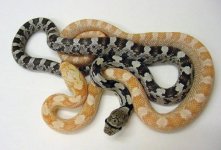El Jefe
Mark 16:18
Serpwidgets said:The other question that was brought up as an extension of that idea is whether gray rats are "just" black rats homo for the ultra gene. :shrugs: I don't pay enough attention to all the non-corn species so that could be a crackpot idea for all I know. :santa:
Interesting question. You never know.
Need to take trip to GA....wait...can't collect native species! :bang:





